LG 29EA93 Monitor Review - Rev. 1.25
by Chris Heinonen on February 12, 2013 8:49 PM ESTLG also offers its own hardware and software calibration package for the 29EA93. Using a custom designed colorimeter, the hardware and software only work with LG monitors but are scheduled to sell for less than competing products from XRite and Datacolor. I mentioned earlier in the review that colorimeters are prone to errors on displays with LED backlights like the LG. This is a general rule, but since LG knows the spectral response of their displays they can program that into their own colorimeters, leading to much better results than a generic colorimeter. It usually won’t be as good as a meter profiled with a spectrometer due to sample variations, but it will be much better than without.
Using their own software and probe, I calibrated the display to the same settings I use: 200 cd/m² and a gamma of 2.2. An sRGB gamma curve is not supported, nor are colorspaces larger than sRGB with this version, but on their professional monitors with a more advanced meter, different colorspaces are supported. The process is very simple: You choose your targets, it will pop up a spot for the calibration puck on screen, and then you let it run the calibration. The process locks the monitor OSD controls as it adjusts it automatically, and then at the end it will create an ICC profile for you and install it.
To evaluate this profile, I again used CalMAN and used the same set of images that we use for our smartphone and tablet testing. Using the automated test pattern generator in CalMAN wasn’t possible, as it would attempt to load its own ICC profile and change the setting in the display. On first look, we see 197.3 cd/m² of light output and 0.19 cd/m² on a black screen for a contrast ratio of 1039:1. This wasn’t as good as I was able to achieve using CalMAN, which might indicate that it is obtaining the peak-white level differently. With CalMAN I could use the Contrast and Brightness controls to get just above 200 cd/m², allowing maximum headroom to adjust the curves to get accurate color. The LG software might not bring these down as much, and then bring down the RGB curves even more, which would lower headroom compared to the other method.
Our CCT average is 6415, but a look at the RGB balance shows that it starts out very good but then drifts a little towards the warmer, redish tint that the CCT reflects. Gamma is almost spot on at 2.21, save for a dip at 5% that most people won’t catch as they only measure in 10% increments. The dE2000 values follow the RGB balance as well, starting out very low but eventually drifting up to a level where a reddish tint will be slightly visible. The average dE2000 for the grayscale is 2.09, a number that is decent but not as good as CalMAN was able to achieve.
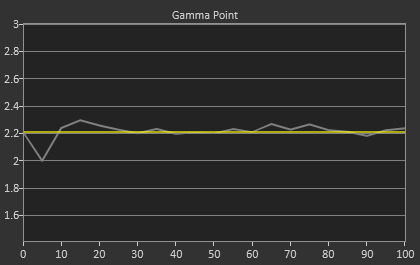
Looking at the Saturations and Color Checker charts, we see improvements but not to the degree that CalMAN allows. Our Color Checker dE2000 is 1.96, but with higher grayscale errors as well as larger errors in the over-saturated colors of red, yellow, and green. Blues also exhibit a bit of over-saturation as well, indicating that the LG sensor isn’t quite as sensitive as the C6 colorimeter, since blue is harder to read.
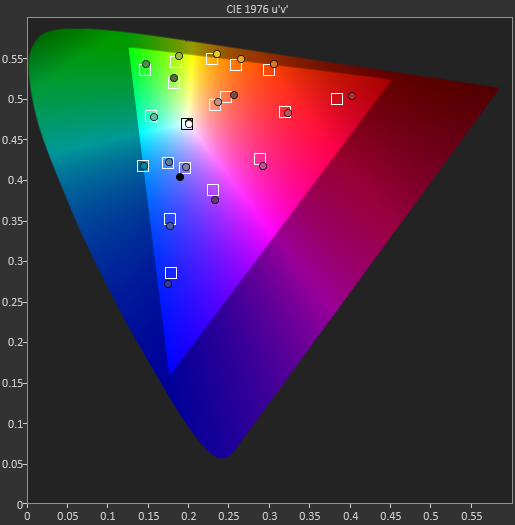
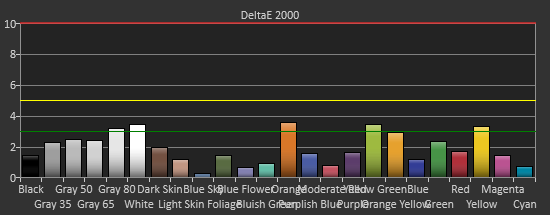
On the saturations data, we see that the Red/Yellow/Green side of the triangle has larger and larger errors as those colors get more saturated. With the over-saturated gamut, this is what we expect to see. Unfortunately none of the calibration software seems to be able to fully pull those points in and correct the over-saturated gamut there, leaving a bit of an error. The overall error is still fairly low, and with most colors not being fully saturated, that over-saturated error isn’t really bad, but better results were obtained with the CalMAN software.
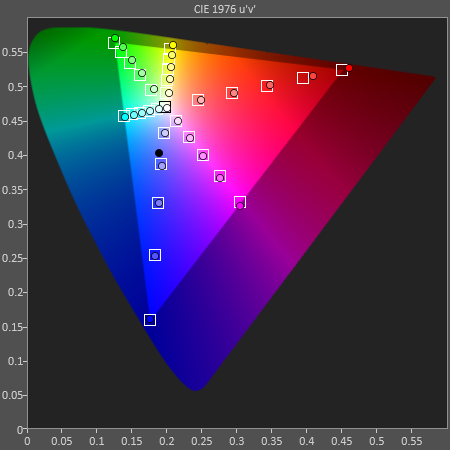
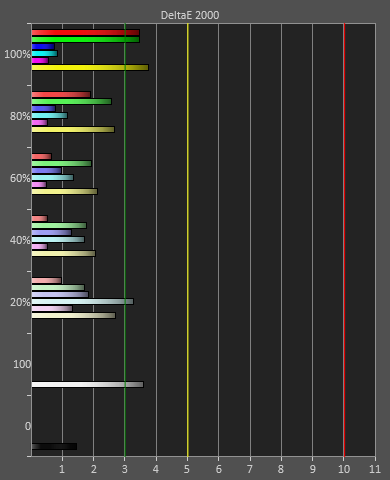
Overall the LG software and hardware solution does do a decent job, but it can’t compete with what is possible using CalMAN with better hardware. Of course, the CalMAN solution with a C6 and i1Pro meter retails for closer to $2,000 than $100, so they are very different spectrums of performance. For $100, I would say the LG results are quite good and will satisfy those that aren’t graphics or video professionals most likely. Just the superior gamma will make a large difference when viewing thanks to the superior dynamic range.








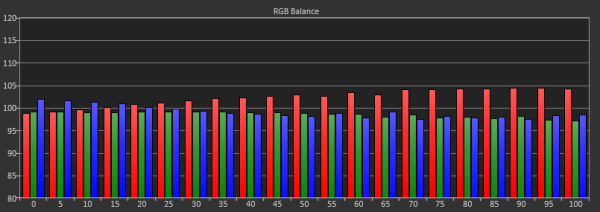
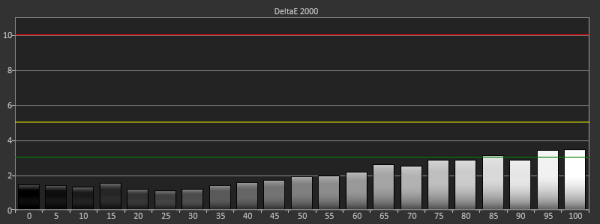








108 Comments
View All Comments
Friso - Wednesday, March 27, 2013 - link
So when are you going to update your review? This is turning into a bit of a joke here, with you raving about a version 1.25 and nobody having the means to verify what version they're actually buying. I have a box standing in front of me. How can I verify whether it's the 'good' version? Without this info, this is a legendary bit of PR by LG, allowing them to sell off all their old stock.GeoffMorris - Monday, April 1, 2013 - link
I agree with Friso.LG needs to know that many find this situation unacceptable and all this doubt is no doubt putting people off buying the monitor. I tried to contact them myself but couldn't seem to find an email address for my country (Japan).
If they were so willing to work with you to iron out the issues product surely you have some way of letting them know that the situation as it stands is probably doing more harm than the 1.09 review.
newsama - Sunday, May 26, 2013 - link
Hey, did you manage to get that image? I'm really scared of shelling out 700 bucks only to get the crappy version =/jjj - Tuesday, February 12, 2013 - link
This is nice but in cases like this the review should be done on a retail unit just to be sure about what is in stores.The pricing is also way high , i imagine the AOC will retail at 500$ and that's still high but at least it's not 700$.
I do wish you would have more screenshots (gaming included) and a video wouldn't hurt, the AR is new , would help to see it in action.
cheinonen - Wednesday, February 13, 2013 - link
I will try to get some screenshots of games if I can, though the site someone linked earlier does provide a good example of showing the differences in aspect ratios. As far as the AOC, it makes no sense to compared the LG against something that isn't released yet. Look at the large difference in how this updated version performed against the original version. We have no way of knowing which one the AOC will perform like, or if it will be better or worse. It will use the same panel I imagine, but that's only one element as we've seen here.As far as retail samples go, the initial sample was the foreign model as it wasn't out in the USA, and then the USA launch was delayed until the issues were fixed, so there was no possible way to get a review unit at a store. It also is cost prohibitive to impossible to buy samples, and with as many issues as every reviewer manages to find with the review samples, believe me, if there's an issue in the product, we're almost certainly going to find it no matter what sample we get.
KLC - Wednesday, February 13, 2013 - link
I agree with jjj, it's more than a little concerning that LG hand carried a new monitor to you for a special review. How will a retail version compare to this hand picked one? Nobody knows.cheinonen - Wednesday, February 13, 2013 - link
They hand carried the initial model to me as well, if that makes you feel better about it, so I don't think that has any effect on the performance or what I find in testing.KLC - Wednesday, February 13, 2013 - link
Of course it doesn't have any effect on performance or what you found, I'm not impugning either you or your results. But let's face it, corporations exist to generate revenue, LG wants to sell monitors. What better way to sell them than to get positive reviews? Why is it startling to suggest that they may tweak a piece of hardware in order to get one?cheinonen - Thursday, February 14, 2013 - link
My question is how this review would be different than any other review then? Every display I've reviewed for AnandTech, aside from the iPhone 5 I bought myself, has been shipped from a company or a PR firm.I'm well aware of the fact that monitors could be sent that are ideal units, and so I attempt to read feedback from people that already own them on forums often to see what issues might exist to look for. To me, this unit is no more likely to be extra special than any other unit that comes in for review.
Look at every other review that I've written, positive or negative, and see how many other companies have followed up to find out what they can do to improve their performance and then attempted to do so. Even when I've received feedback, it's been nothing close to this, and typically more defensive than actually inquisitive about how to improve performance.
I'm certain someone else out there will buy a unit and test it and see if they match up. If they have a huge variance between them, then we can start to look into it more.
Lifted - Tuesday, February 12, 2013 - link
Reading the title I had no idea if you like the product.Not realizing or remembering that this is a followup article, and then reading the first few sentences, I was sooo close to just moving along and not waste my time reading a review of what I assumed was an absolutely horrible product.
I believe Anand usually puts some clue in the title of the review if there has been a major change in the product. This is not just a good idea for your readers, but also for yourself after spending so much time on this (you want people to read it, yes?), and LG for going above and beyond in getting this monitor right, which is extremely rare these days.